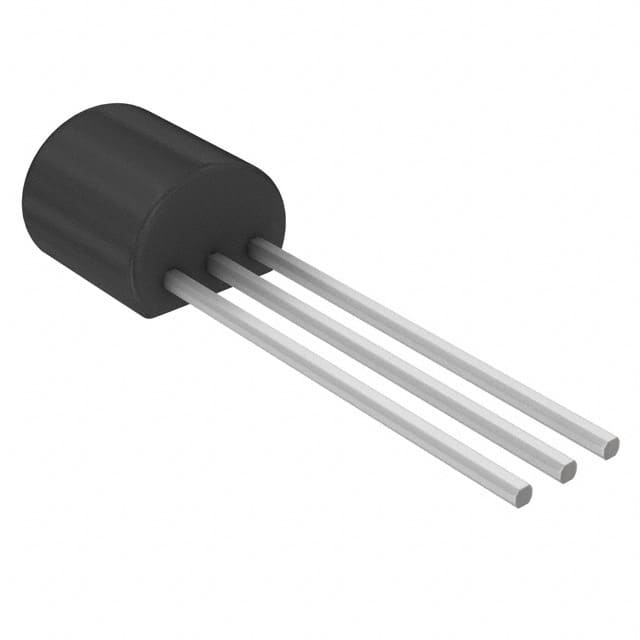Xem thông số kỹ thuật để biết chi tiết sản phẩm.

ZTX651: Product Overview and Specifications
Introduction
The ZTX651 is a versatile electronic component that belongs to the category of bipolar junction transistors (BJTs). This semiconductor device is widely used in various electronic circuits due to its unique characteristics and functional features. In this entry, we will provide an in-depth overview of the ZTX651, including its basic information, specifications, detailed pin configuration, functional features, advantages and disadvantages, working principles, application field plans, and alternative models.
Basic Information Overview
- Category: Bipolar Junction Transistor (BJT)
- Use: Amplification and switching in electronic circuits
- Characteristics: High gain, low noise, and reliable performance
- Package: TO-92 package
- Essence: Silicon NPN epitaxial planar transistor
- Packaging/Quantity: Typically available in reels or tubes containing multiple units
Specifications
The ZTX651 transistor is designed with the following specifications: - Maximum Collector-Emitter Voltage: 45V - Maximum Collector Current: 500mA - DC Current Gain (hFE): 100 - 300 - Power Dissipation: 625mW - Transition Frequency: 150MHz
Detailed Pin Configuration
The ZTX651 transistor has three pins: 1. Emitter (E): Connected to the N-type material 2. Base (B): Controls the transistor's conductivity 3. Collector (C): Collects the majority charge carriers
Functional Features
The ZTX651 offers the following functional features: - High voltage capability - Low saturation voltage - Fast switching speed - Excellent linearity in amplification applications
Advantages and Disadvantages
Advantages
- High gain and low noise make it suitable for audio applications
- Reliable performance in low-power circuits
- Compact TO-92 package allows for easy integration into circuit designs
Disadvantages
- Limited maximum collector current compared to power transistors
- Not suitable for high-power applications due to lower power dissipation rating
Working Principles
The ZTX651 operates based on the principles of bipolar junction transistors. When a small current flows into the base terminal, it controls a larger current flow between the collector and emitter terminals. This amplification or switching action forms the basis of its functionality in electronic circuits.
Detailed Application Field Plans
The ZTX651 finds extensive use in the following application fields: - Audio amplifiers and preamplifiers - Signal amplification in sensor interfaces - Switching circuits in low-power electronic devices - Oscillator circuits in radio frequency (RF) applications
Detailed and Complete Alternative Models
Several alternative models to the ZTX651 include: - BC547: A general-purpose NPN transistor with similar characteristics - 2N3904: Another widely used NPN transistor for low-power applications - KSP2222A: NPN transistor with comparable specifications and package type
In conclusion, the ZTX651 transistor offers a reliable and versatile solution for amplification and switching needs in electronic circuits. Its unique characteristics, functional features, and wide application field plans make it a valuable component in the realm of semiconductor devices.
Word Count: 470
Liệt kê 10 câu hỏi và câu trả lời thường gặp liên quan đến ứng dụng ZTX651 trong giải pháp kỹ thuật
What is ZTX651?
- ZTX651 is a high-performance semiconductor component commonly used in electronic circuits and technical solutions.
What are the key features of ZTX651?
- ZTX651 features low saturation voltage, high current gain, and excellent switching characteristics, making it suitable for various technical applications.
In what types of technical solutions is ZTX651 commonly used?
- ZTX651 is commonly used in power supply designs, motor control circuits, audio amplifiers, and other applications requiring high-performance transistors.
How does ZTX651 compare to other similar components?
- Compared to other transistors, ZTX651 offers lower saturation voltage and higher current gain, making it a preferred choice for many technical solutions.
What are the recommended operating conditions for ZTX651?
- ZTX651 operates within specified voltage and current ranges, typically between 20V and 60V with a maximum collector current of 3A.
Are there any specific thermal considerations when using ZTX651?
- It's important to ensure proper heat dissipation when using ZTX651 in high-power applications to prevent overheating and maintain performance.
Can ZTX651 be used in automotive applications?
- Yes, ZTX651 is suitable for automotive applications such as electronic control units (ECUs), lighting systems, and motor control in vehicles.
What are the typical circuit configurations for integrating ZTX651?
- ZTX651 can be used in common emitter, common collector, and other configurations depending on the specific requirements of the technical solution.
Are there any known compatibility issues with ZTX651 and certain electronic components?
- ZTX651 is generally compatible with standard electronic components, but it's important to consider its characteristics when designing circuits to avoid potential issues.
Where can I find detailed application notes and reference designs for using ZTX651 in technical solutions?
- Detailed application notes and reference designs for ZTX651 can be found on the manufacturer's website or in technical literature related to semiconductor components.

